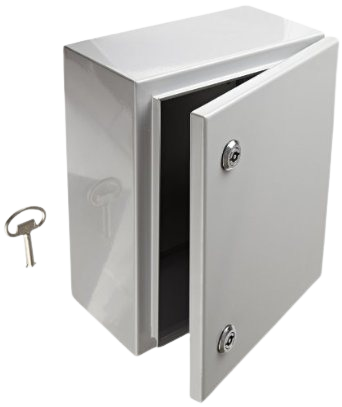
Custom made Enclosure box
A custom made enclosure box is a specialized housing unit designed to protect and contain electronic or mechanical components. The box can be made to meet specific size, shape, and material requirements, tailored to fit the specific needs of the components being housed.
These boxes are typically made from materials such as aluminum, stainless steel, or plastic, and can be designed with various features such as ventilation, cable entry points, and mounting options to allow for easy installation and access to the components inside.
Custom made enclosure boxes are used in a variety of industries, including telecommunications, automation, and industrial controls, to house sensitive and valuable equipment such as servers, control panels, and switches. These boxes provide protection from environmental factors such as dust, moisture, and temperature fluctuations, which can cause damage to electronic components.
The specifications of a custom made electrical enclosure box will vary depending on the specific needs and requirements of the components being housed. However, some general specifications may include:
Size and Shape: The size and shape of the enclosure box will be customized to fit the specific components being housed. This may include consideration of the overall dimensions, internal space requirements, and any external mounting requirements.
Material: The material used for the enclosure box will depend on the environmental conditions and specific requirements of the application. Common materials include aluminum, stainless steel, or plastic.
Protection Rating: The protection rating of the enclosure box will depend on the intended use and environmental conditions. Protection ratings typically range from IP20 for indoor use to IP68 for outdoor use in harsh environments.
Mounting Options: The enclosure box may be designed with mounting options, such as wall-mount or rack-mount options, to facilitate installation and maintenance.
Access Points: Access points such as doors, windows, and cable entry points may be included in the design of the enclosure box to provide access to the components inside and allow for maintenance and servicing.
Ventilation: The enclosure box may be designed with ventilation options such as fans, vents, or heat exchangers to regulate the temperature inside and prevent heat buildup.
Finish: The finish of the enclosure box may be customized to meet aesthetic or environmental requirements, such as a powder-coated finish for durability or a custom color for branding purposes.
- Industrial Settings: Enclosure boxes can be installed in factories and industrial settings to protect electronic and electrical components from dust, moisture, and other environmental factors.
- Telecommunications: Enclosure boxes can be installed in telecommunications settings to house sensitive equipment such as servers, switches, and routers.
- Oil and Gas: Enclosure boxes can be installed in oil and gas settings to protect electronic and electrical components from exposure to harsh environments and extreme temperatures.
- Construction Sites: Enclosure boxes can be installed on construction sites to protect electrical components used in temporary power systems.
